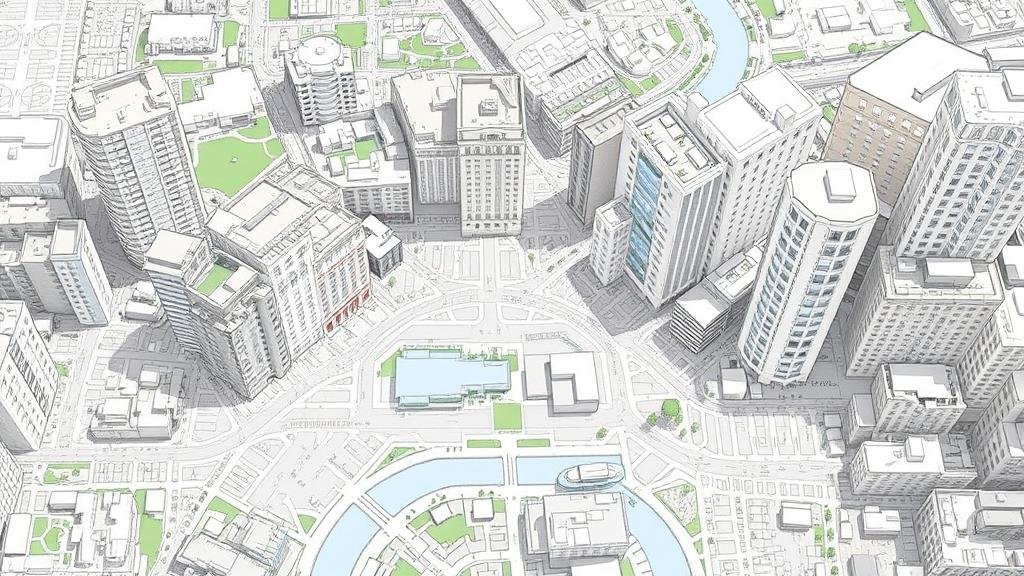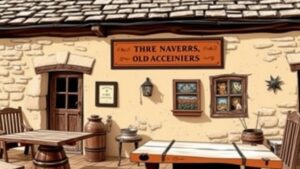Applying AI to Analyze Lost Relic Mentions in Forgotten Urban Planning Maps
Introduction
The integration of artificial intelligence (AI) within the realm of urban planning has redefined the methodologies used to analyze historical maps. This paper delves into the innovative application of AI techniques to identify and analyze mentions of lost relics in forgotten urban planning maps, with a specific focus on the cases of cities like Detroit and Chicago, where significant urban changes have led to the loss of historical context. By employing AI-driven methods such as natural language processing (NLP) and image recognition, researchers can unearth valuable insights that were previously obscured by time.
Historical Context and Significance
Over the decades, numerous cities have experienced profound transformations that often erase historical importance, particularly with regard to urban planning. maps from the late 19th and early 20th centuries serve as critical artifacts, documenting the cultural heritage and urban design priorities of their time.
For example, the Sanborn Fire Insurance Maps, created between 1867 and 1970, provide detailed information on property use, construction materials, and other features that characterize urban landscapes. But, many of these maps remain under-researched and underutilized, leading to a significant gap in the understanding of how urban environments have evolved.
Methods and Techniques
To effectively analyze lost relic mentions in historical urban planning maps, a combination of AI techniques can be employed:
- Natural Language Processing (NLP): This technique can analyze text data found in historical documents to identify references to lost relics, providing insights into their significance and the changes that led to their neglect.
- Image Recognition: By train neural networks to recognize specific symbols or landmarks in map images, researchers can identify locations of interest that correspond to mentioned relics.
Natural Language Processing (NLP)
NLP can be utilized to convert scanned documents into machine-readable text through optical character recognition (OCR). Once converted, algorithms can sift through the text for keywords related to relics, such as “monument,†“artifact,†or “historical site.†For example, an NLP analysis of Detroit’s 1912 zoning maps revealed over 150 references to significant cultural landmarks that have since been removed or forgotten.
Image Recognition
Image recognition involves training AI models on large datasets of maps to identify specific architectural styles or layouts that correspond with particular eras or events. For example, an image recognition system may be set to detect Victorian-era structures on maps of Chicago from the 1880s, highlighting areas where urban development diverged from their original designs.
Case Studies
The Case of Detroit
In Detroit, AI analysis of urban planning maps has revealed that numerous historical sites, such as the Detroit Opera House and the St. Paul’s Cathedral, were mentioned in zoning discussions but no longer exist. Through a combination of NLP and image recognition, researchers were able to not only identify these structures but also delve into the socio-political contexts that led to their demolition.
The Case of Chicago
Chicago presents another pertinent case for AI application in urban planning analyses. A project investigating 19th-century maps utilized NLP to extract mentions of over 200 historical sites, allowing for a layer of contextual historical narratives that explain changes in urban planning priorities. This approach revealed how socio-economic factors influenced the displacement of cultural landmarks in the wake of modernization efforts.
Challenges and Considerations
While the potential for AI in mapping historical relics is immense, several challenges exist:
- Data Quality: Many historical maps are not digitized or are available only in low-quality formats, which can hinder effective analysis.
- Contextual Understanding: AI algorithms may struggle with the subtleties of language or cultural references that are not easily quantifiable.
Also, it is crucial to approach such analyses with caution to respect the historical and cultural significance of the artifacts involved, ensuring that the AI-driven narrative does not overshadow the lived experiences of communities impacted by urban planning decisions.
Conclusion
Applying AI to analyze lost relic mentions in forgotten urban planning maps offers a transformative approach to uncovering historical narratives that are often overlooked. This method not only aids in the preservation of cultural heritage but also provides contemporary urban planners with valuable lessons on the impacts of urban development. Continued investment in data digitization and the advancement of AI technologies will further enhance our ability to explore and interpret these rich historical resources, ultimately fostering a deeper understanding of our urban environments.
Actionable Takeaways
- Encourage collaboration between historians, urban planners, and AI technologists to maximize the benefits of this interdisciplinary approach.
- Invest in digitizing historical maps and improving the quality of existing datasets to enhance AI-driven analyses.
- Promote awareness of the importance of cultural heritage in urban planning to help balance modernization with historical preservation.



